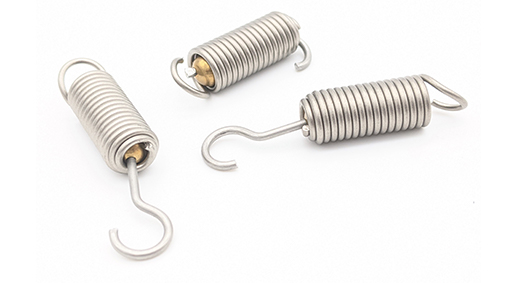Get unique, complex parts easily. No matter your requirements, Chaoyi Spring creates hard-to-produce coil springs and wire forms.
Let us help you create the custom wire form you need, from S-hooks and J-hooks to utility hooks and more.
We work closely with customers across a wide range of industries, helping them design and manufacture made-to-order parts.
Why choose Chaoyi Spring? We prioritize customer-focused collaboration, modern equipment and the latest technology to make your parts per print.
Find the information and guidance you need, from measuring a spring to learning about materials, placing an order and much more.
In the world of mechanics, there are many unsung heroes that quietly perform their duties, ensuring that machines operate smoothly and efficiently. Among these silent workhorses, compression springs stand out


In the world of mechanics, there are many unsung heroes that quietly perform their duties, ensuring that machines operate smoothly and efficiently. Among these silent workhorses, compression springs stand out as crucial components that play a vital role in countless applications. From the simple act of pushing a button to the intricate workings of a complex engine, compression springs provide the force and resilience necessary for mechanical systems to function properly.

Compression springs, as the name suggests, are helical coils designed to store mechanical energy when compressed. They are typically made from high-quality spring steel, which is chosen for its strength, elasticity, and resistance to fatigue. When a force is applied to the spring, it compresses, storing potential energy. Upon release, the spring's inherent elasticity pushes back, restoring its original shape and releasing the stored energy. This push-back force is what makes compression springs so useful in a variety of applications.
The working principle of a compression spring is rooted in the concept of Hooke's Law, which states that the force required to compress a spring is directly proportional to the distance it is compressed. In simpler terms, the more you compress a spring, the more force it will exert when released. This simple principle underlies the diverse applications of compression springs.
Compression springs are ubiquitous in mechanical systems, finding their way into a wide array of applications, from everyday objects to sophisticated machinery. Here are some common examples:
Compression springs come in various shapes and sizes, each designed to meet specific requirements. The most common types include:
Selecting the appropriate compression spring for a particular application is crucial for optimal performance and longevity. Several factors must be considered:
Compression springs offer several advantages that make them valuable components in mechanical systems:
Compression springs are essential components in countless mechanical systems, providing the force and resilience needed for smooth operation. Their versatility, reliability, and cost-effectiveness make them invaluable in industries ranging from automotive to medical. By understanding the different types, applications, and factors involved in choosing the right compression spring, engineers and designers can ensure that their systems operate efficiently and effectively.
The next time you encounter a door that closes smoothly, a mechanical pencil that writes effortlessly, or a car that absorbs bumps with ease, take a moment to appreciate the silent workhorse behind these seemingly simple functions: the humble compression spring.
Browse some of the custom wire forms and springs that we manufacture. Don’t see what you need? We specialize in made-to-order products that meet your application requirements.
Visit Our GalleryNeed a custom wire form or coil spring? We make it work. Fill out the contact form and a representative will respond within 1 business day. If you have a PDF or CAD file, you can submit to request a quote.